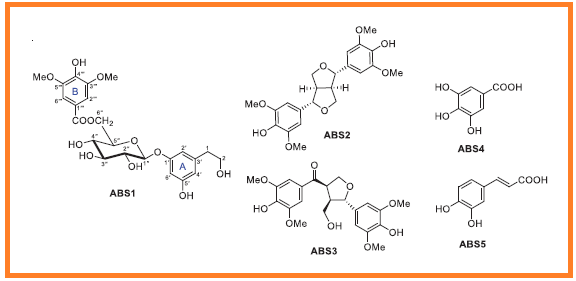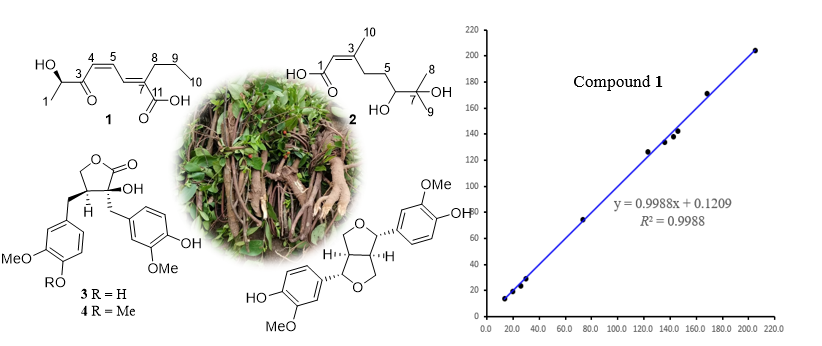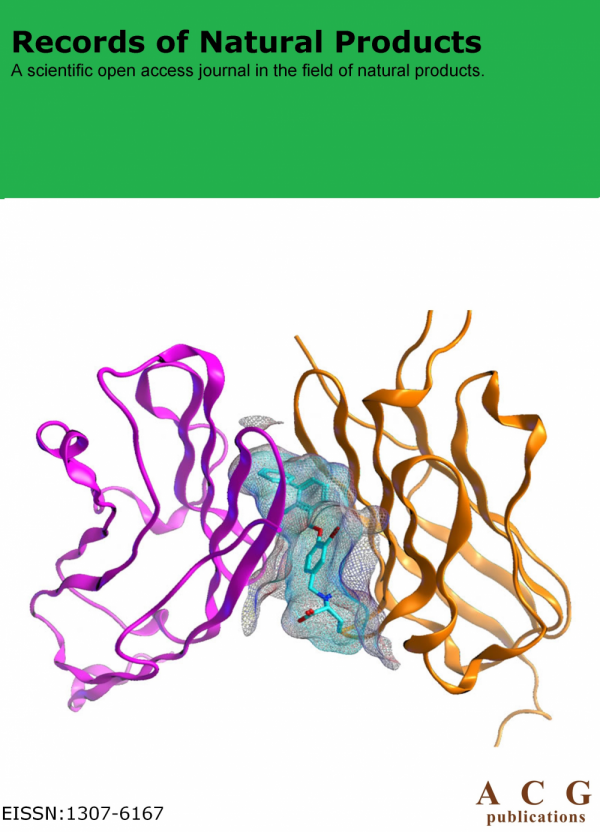Records of Natural Products
Year: 2026 Volume: 20 Issue:1
1) A new chapter, 20th year
 DOI
http://doi.org/10.25135/rnp.2509.3649
Keywords
Records of Natural Products
new format
quality
DETAILS
PDF OF ARTICLE
© 2026 ACG Publications. All rights reserved.
DOI
http://doi.org/10.25135/rnp.2509.3649
Keywords
Records of Natural Products
new format
quality
DETAILS
PDF OF ARTICLE
© 2026 ACG Publications. All rights reserved.
2) Nitric oxide inhibitory compounds from Thai medicinal plants Averrhoa bilimbi and Schinus terebinthifolia

Nitric oxide (NO) overproduction by activated macrophages drives inflammatory responses via iNOS activation, prompting the search for natural NO inhibitors. A bioassay-guided investigation targeting NO inhibition was conducted on Averrhoa bilimbi and Schinus terebinthifolia, two Thai medicinal plants. The most active fractions, derived from the branches of A. bilimbi and the stems of S. terebinthifolia, were subjected to chemical analysis. Seventeen compounds were isolated, five (ABS1–ABS5) from A. bilimbi and twelve (ST1–ST12) from S. terebinthifolia, with bilimoside A (ABS1) identified as a new compound. Structural elucidation of all isolated compounds was accomplished through detailed spectroscopic analysis, including NMR and HRESIMS. Their in vitro NO inhibitory activity was evaluated, revealing 3-oxoursolic acid (ST2) as the most potent compound (IC50 28.00 µg/mL), surpassing the positive control L-NMMA (IC50 41.30 µg/mL), while exhibiting minimal cytotoxicity. These findings suggest that ST2 could serve as a promising candidate for further development as an anti-inflammatory agent.
DOI http://doi.org/10.25135/rnp.2507.3593 Keywords Averrhoa bilimbi Schinus terebinthifolia bilimoside A nitric oxide inhibition. DETAILS PDF OF ARTICLE © 2026 ACG Publications. All rights reserved.3) Windienoic acid, a new compound from themedicinal plant Wikstroemia indica

A phytochemical investigation of the roots of the medicinal plant Wikstroemia indica (Linn.) C. A. Mey led to the isolation of five compounds (1–5), comprising one previously undescribed metabolite (1), named windienoic acid, and four reported compounds (2–5). The structural elucidation of these compounds was accomplished through comprehensive analysis of spectroscopic data, including 1D (¹H and ¹³C NMR) and 2D NMR techniques (HSQC, COSY, and HMBC). Compounds 2–5 were identified as the monoterpene 6,7-dihydroxy-3,7-dimethyl-2-octenoic acid (2), the dibenzylbutyrolactone-type lignans (-)-nortrachelogenin (3) and (-)-trachelogenin (4), and the furofuran-type lignan pinoresinol (5) by comparing with literature data. Notably, the structure of compound 1 incorporated an extended conjugated system comprising a dienone moiety linked to a carboxylic acid group, which is rarely in acyclic compound, its structure was confirmed by 13C NMR calculation. The NMR assignment of dihydroxy-3,7-dimethyl-2-octenoic acid (2) is reported herein for the first time in methanol-d4. The cytotoxic screening assay against the A549 human lung cancer cell line of all compounds revealed that compound 3 exhibited weak activity with an IC₅₀ value of 42.3 μM.
DOI http://doi.org/10.25135/rnp.2508.3621 Keywords Wikstroemia indica windienoic acid cytotoxicity DETAILS PDF OF ARTICLE © 2026 ACG Publications. All rights reserved.